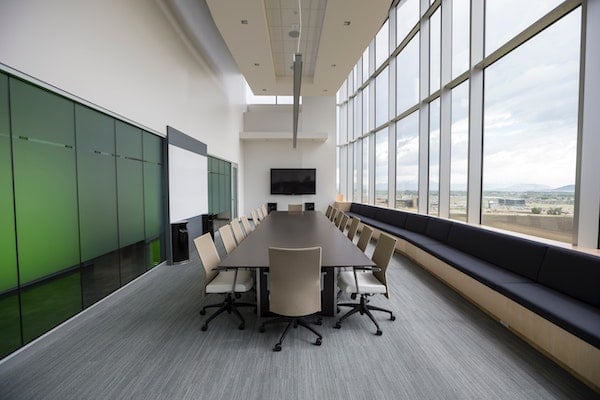Published on
The COVID-19 Effect: Shifting into The New Normal

The initial wave of panic in response to the pandemic is slowing deflating in higher education. Institutions are beginning to grasp what is happening and how they’re responding. With no clear end date to remote learning, faculty leaders now need to put a more concrete and strategic plan in place for upcoming courses to be delivered online. Chris Labelle discusses how the continuing ed divisions helped Colorado State University transition to remote learning, the possibility for more faculty to use online ed approaches and how internal operations are shifting to this new normal.
The EvoLLLution (Evo): What role has Colorado State University Online played over the past few weeks in helping the rest of the institution adapt to remote teaching and learning?
Chris LaBelle (CLB): Since the scope of our course migration project was very large at CSU, our university leaders decided to rely primarily on a decentralized approach. Consequently, a much higher level of coordination was needed between CSU Online and other central resources, such as IT and the Institute for Learning and Teaching. Temporarily matrixing parts of our three central organizations helped us more effectively support faculty as they shifted to remote instruction with very little lead time. At the same time, we aggregated our instructional resources to a public-facing “Keep Teaching” website that we continue to curate as signals across the departments improve our understanding of faculty needs. Thankfully, our Keep Teaching approach has had our provost’s full support, and his regular emails to faculty include links to the website. Every step of the way, we’ve done our best to support our college partners with workshops, virtual office hours and “just-in-time” instructional resources, such as a simplified course map, an abbreviated Quality Matters rubric and webinars and white papers focused on topics such as alternative assessment, accommodation protocols and student engagement. Ultimately, our aggregated central support approach has served as a backstop when faculty needs exceed the capacity of local support staff.
Since our role from the beginning of the pandemic has involved both service provision and strategic planning, we’ve done our best to give equal attention to both areas. However, in most cases, the exigency of providing academic continuity for our residential students has meant that service provision has been our top priority. Since there were no precedents or existing benchmarks to help us navigate through these difficult circumstances, we realized that our strategic contribution during the first few weeks often meant that our participation in framing high-level university priorities was helpful, especially when it came to determining the relationship between local response and our central resources. In some cases, these discussions focused on topics such as “remote instruction” versus “online learning,” or asynchronous vs. synchronous teaching. Since we still don’t know how long our residential classes will be taught remotely, we’re now working more closely with our faculty council and other academic governing bodies to discuss our university’s need to strategically systematize the development of our next wave of remote courses.
Evo: What has been the early feedback from staff and faculty operating in this remote environment?
CLB: It’s been mostly positive to date, but faculty who have never taught remotely still need more time to reflect on their experiences. Not surprisingly, what faculty most care about with their online courses is quality. Like other universities across America, our faculty deserve tremendous credit for the effort they’ve made to support their students in the middle of a difficult situation.
I think there’s a growing awareness among our staff and university leaders that although we’ve successfully adapted to the situation for the current term, we need to progressively rely more heavily on the course development conventions that inform how we build online courses in a non-emergency context. Even though remote instruction and our online courses will never fully converge in terms of processes and resources, we’re committed to closing the gap between the two approaches, so we can continue to drive quality and ensure that it differentiates the CSU learning experience.
As universities being seeing more examples of COVID-19 adversely impacting their students’ academic progress, I think it’s important to double down on implementing more rigorous course development quality standards to ensure that a university’s short-term response to the pandemic doesn’t ultimately become its de facto long-term strategy.
Evo: Internally, what has the shift to remote learning meant for your courses and learners?
CLB: Since our first priority was to help prepare our faculty for remote instruction, we had to quickly shift our focus on student engagement after remote courses were launched. Under normal circumstances, CSU Online is already very attentive to the needs of its learners by investing in advising support, learning analytics, online tutoring and many other resources that help us elevate student satisfaction while improving retention. In the current situation, we found open doors across campus to collaborate more strategically and to think more comprehensively about where we could begin removing obstacles related to enrollment management and student services–since a student’s academic experience is highly influenced by services and resources that they inform the course-level experience. With both our remote learners and online students, there has been a concerted effort to prioritize academic continuity while drawing on every resource available to ensure students who have in some way been adversely impacted by COVID-19 are also supported by more flexible academic policies.
Evo: How open do you think more traditional faculties will be to experimenting with online and flexible learning options in the next few years?
CLB: Even though CSU Online was already ranked by U.S. News and World Report as a top 10 public provider of online degrees, I believe that the extreme circumstances we’re experiencing have afforded us a unique opportunity to stress test our processes, staffing and infrastructure. I think it’s accurate to suggest that we’ve already learned important new lessons about how to support remote and online students. If there’s a silver lining for our organization, it feels like we’ve completed almost a decade of academic progress and procedure work in less than a month because of the university’s unwavering commitment to serving students in a fully remote environment.
In terms of how this situation might alter students’ preferences related to modality, we continue to parallel our short-term response with our long-term strategy, so that our more immediate decisions are informed by new trends we’re observing in relation to student preferences. While pre-pandemic market signals allowed us to more easily predict demand for our online programs based on demographic variables, COVID-19 is already calling into question the most foundational question: do younger residential students still prioritize the social engagement opportunities typically only available during a campus-based experience over the flexibility that online learning affords? Although we’re planning on polling our students to understand their needs, we still don’t fully understand how many , especially among our international students, will need additional help “bridging” from the current situation to a future term when they can re-enter their residential program. Alternatively, we also don’t know how many non-traditional online learners may seek out residential or hybrid programs; or access to residential programs that are now offered remotely.
Evo: Reflecting on the past few weeks, what role do you think divisions that have historically focused on serving adults can start to play in helping institutions adapt to serving more non-traditional learners in the future?
CLB: Since CSU’s Osher Lifelong Learning Institute is under CSU Online, which sits under our university’s Office of Outreach and Engagement, we’ve been able to lean into our university’s outreach mission to help us shift more of our resources to advance no-cost public engagement efforts. For example, even though our Osher programs are normally only accessible to paying members, we’ve been migrating some of our spring face-to-face programs to an online format so that we can expand our reach across the entire state.
This interview was edited for length and clarity.
Editor’s note: This interview was recorded on April 7, 2020.



